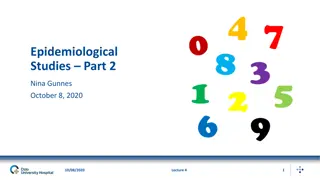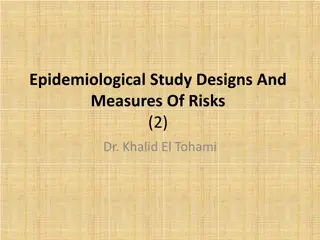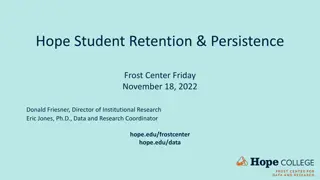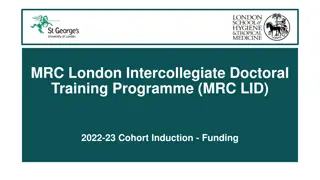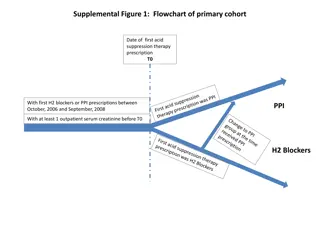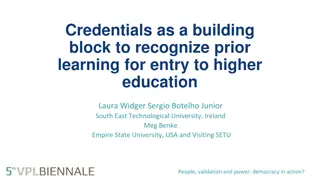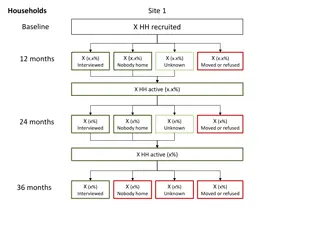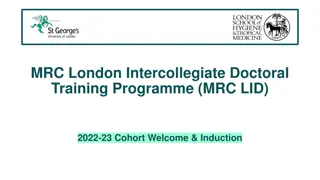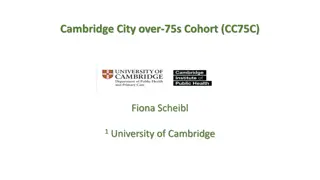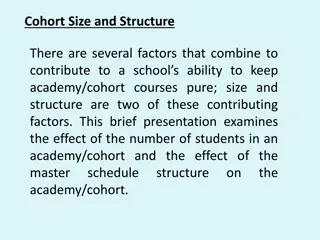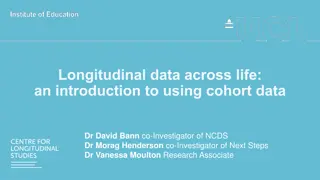Understanding Cohort Analysis in Educational Research
Cohort analysis in educational research involves studying a group of students meeting specific criteria to analyze trends over time. Baseline data is crucial for comparison, and it helps institutions track student persistence, retention, and attrition rates. By establishing baselines, institutions can improve quality and implement effective student retention programs. Theoretical frameworks like the Persistence-Retention-Attrition Triad guide cohort analysis, focusing on student enrollment patterns and graduation rates. Enrolment studies and retention of qualifications are key aspects examined to enhance student success.
Download Presentation

Please find below an Image/Link to download the presentation.
The content on the website is provided AS IS for your information and personal use only. It may not be sold, licensed, or shared on other websites without obtaining consent from the author. Download presentation by click this link. If you encounter any issues during the download, it is possible that the publisher has removed the file from their server.
E N D
Presentation Transcript
COHORT ANALYSIS Alfred Mutanga MIS Specialist University of Venda Date: 22 November 2013 Venue: NWU PUK Sports Village
Why a Cohort Analysis? ???? A cohort? A group of students selected for further study Meets a certain predetermined criterion Often this a group of students enrolling for the first time in a cluster together during the same academic period Baseline data: is the basis for cohort study
Baseline Data Baselines Established with internal data and are used to determine performance over time These data are used to represent the state of the issue at hand before selected activities or events took place Establishment of baselines is critical for continuous quality improvement initiatives or other improvement processes Cohort Analysis refers to the use of data by institutions to compare current performances with a prior performance to determine trends
Theoretical Framework for Cohort Analysis The Persistence- Retention- Attrition Triad? Refers to the tendency for students to continue their enrollment at an institution Persistence focuses on the tendency of students to continue their enrolment from semester to semester Retention Studies focuses on the tendency for the students to enroll in consecutive semesters Attrition relates to the tendency of the students to withdraw from a qualification Persistence- Retention- Attrition how is HEDA taking care of this through Cohort Analysis?
Persistence-Retention-Attrition: HEDA Contexts Persistence: HEDA includes Enrolment Studies in the Cohort Analysis Application Enrolment Studies is an examination of the number of students enrolled for an academic period tracked year by year Persistence studies may include: Study of Graduation rates The Flow of students through the institution Data from these studies may become baseline for determining the impact of student retention-enhancing programs or activities
Retention Qualification Retention- tendency for students to continue attending a qualification until completion regardless of the grade they receive Usefulness of Retention Studies: Show students overall determination to stay enrolled regardless of grade Highlight the patterns of student withdrawal from qualifications
Attrition Attrition in HEDA is defined with two indicators and these are drop-outs and Stop-outs This type of study is a variation of the aforementioned studies as it focuses on the persistence through a semester or an academic year. Stop-outs are students who withdraw from a qualification and at a later date re-join the qualification (or another at the same institution?) Drop-outs are students who withdraw from a qualification and will never re-join the qualification during the period of study Calculating attrition is an important aspect of determining student engagement with the institution
Cohort Analysis Provoke Some Questions Graduates in the first Cohort Year-how come we have a graduate during the first year students enrol for a qualification? Methodology FCE Student Unit Records- Who are the students who are retained in the system for such a long time? Are we doing enough as an institution to help students graduate in record time or finish their courses? What do our Teaching and Learning, Assessment say? Do they need to be reviewed Premise for Institutional Research activities concerning student engagement with the institution, etc.
Our Experience Identifying Unit Records Knowledge of SQL






